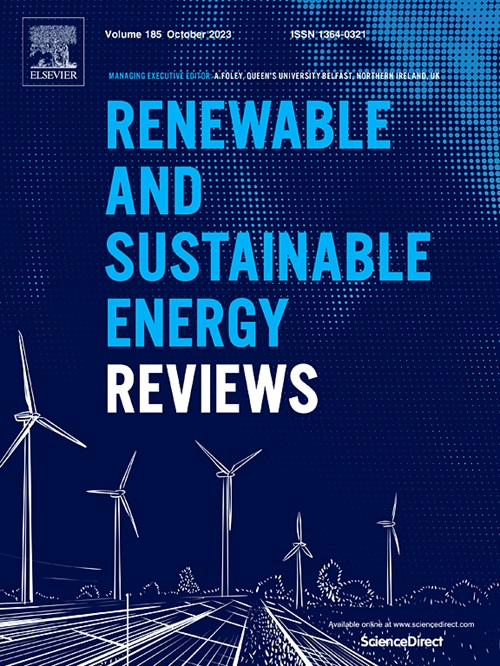Microwave applied to the thermochemical conversion of biomass: A review
IF 16.3
1区 工程技术
Q1 ENERGY & FUELS
引用次数: 0
Abstract
Renewable fuels and valuable chemicals derived from biomass offer a promising solution to address the global energy shortage and carbon emission challenges. However, the commercial application of traditional biomass thermochemical conversion technologies remains hindered, due to low heat transfer and processing efficiencies. In recent years, microwave heating, as a novel method, has garnered significant attention for its advantages in dielectric heating, superior heat transfer efficiency, and potential for carbon emission reduction. Nevertheless, the precise role of microwaves in various applications remains unclear. Therefore, this research provides an overview of microwave applications in different types of biomass thermochemical conversion processes, examines the role of microwave, and suggests research directions to enhance the benefits. This research summarized common knowledge points across areas including the principles of microwave heating, the microwaves-biomass interactions, microwave absorbents/catalysts, and microwave effects. The material transformation of biomass during thermochemical conversion and their interactions with microwave was analyzed. Based on whether microwave primarily provide rapid thermal energy or enhance activity during the process, the technologies were categorized into microwave-driven technologies (drying, pyrolysis, torrefaction, hydrothermal technology) and microwave-assisted technologies (gasification, tar reforming, combustion). Additionally, the technical characteristics and advancements in each technology was conducted. Furthermore, an in-depth analysis of the challenges and opportunities from the viewpoints of theoretical investigation, equipment research, and industrial application was concluded. This review aims to provide in-depth understanding and inspiration for research and development in the thermochemical conversion biomass with microwave.
求助全文
约1分钟内获得全文
求助全文
来源期刊

Renewable and Sustainable Energy Reviews
工程技术-能源与燃料
CiteScore
31.20
自引率
5.70%
发文量
1055
审稿时长
62 days
期刊介绍:
The mission of Renewable and Sustainable Energy Reviews is to disseminate the most compelling and pertinent critical insights in renewable and sustainable energy, fostering collaboration among the research community, private sector, and policy and decision makers. The journal aims to exchange challenges, solutions, innovative concepts, and technologies, contributing to sustainable development, the transition to a low-carbon future, and the attainment of emissions targets outlined by the United Nations Framework Convention on Climate Change.
Renewable and Sustainable Energy Reviews publishes a diverse range of content, including review papers, original research, case studies, and analyses of new technologies, all featuring a substantial review component such as critique, comparison, or analysis. Introducing a distinctive paper type, Expert Insights, the journal presents commissioned mini-reviews authored by field leaders, addressing topics of significant interest. Case studies undergo consideration only if they showcase the work's applicability to other regions or contribute valuable insights to the broader field of renewable and sustainable energy. Notably, a bibliographic or literature review lacking critical analysis is deemed unsuitable for publication.
 求助内容:
求助内容: 应助结果提醒方式:
应助结果提醒方式:


